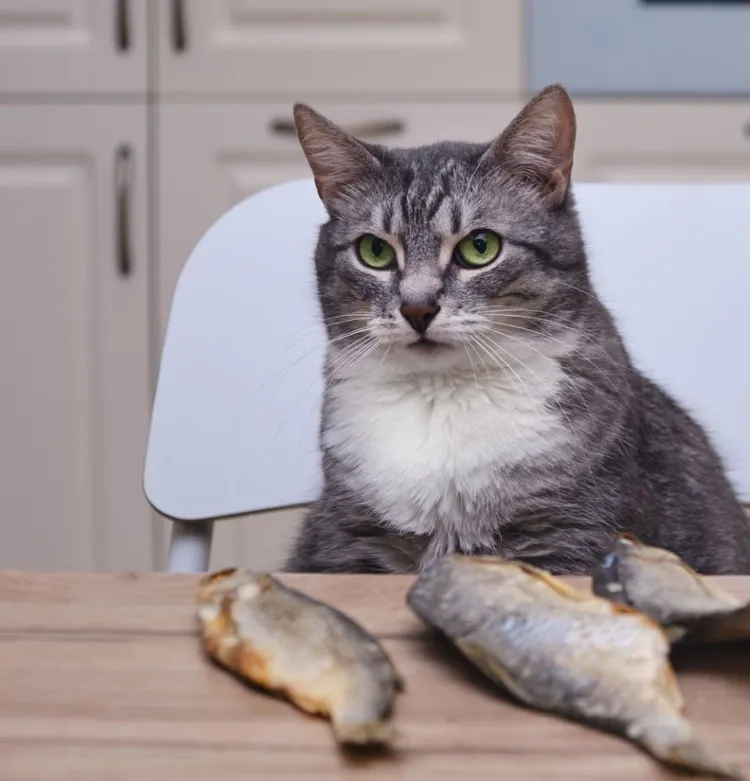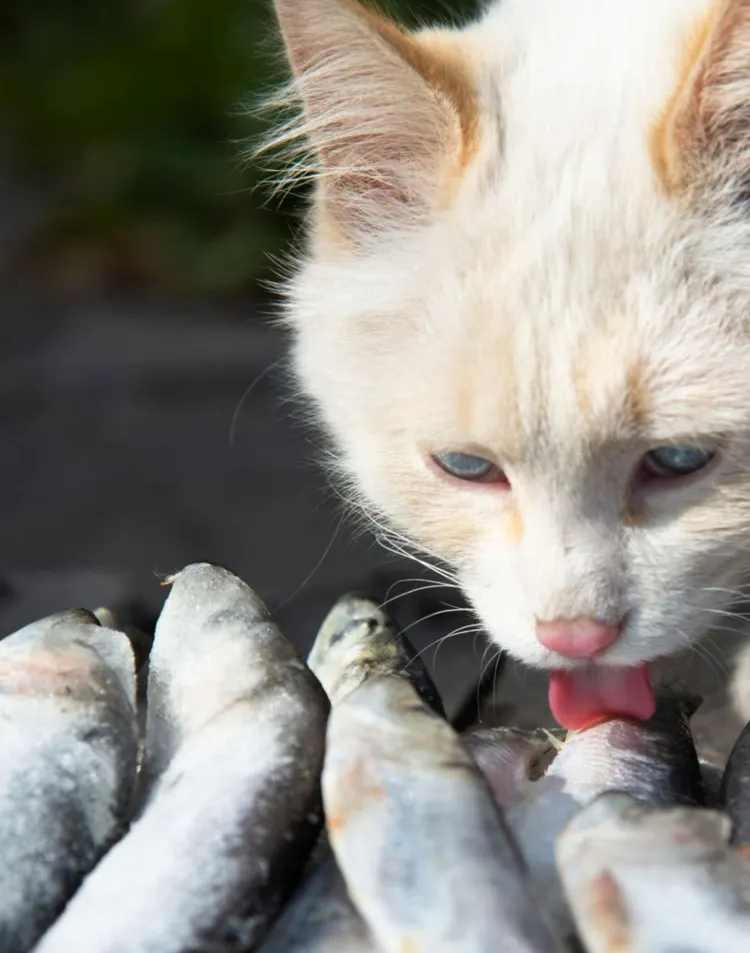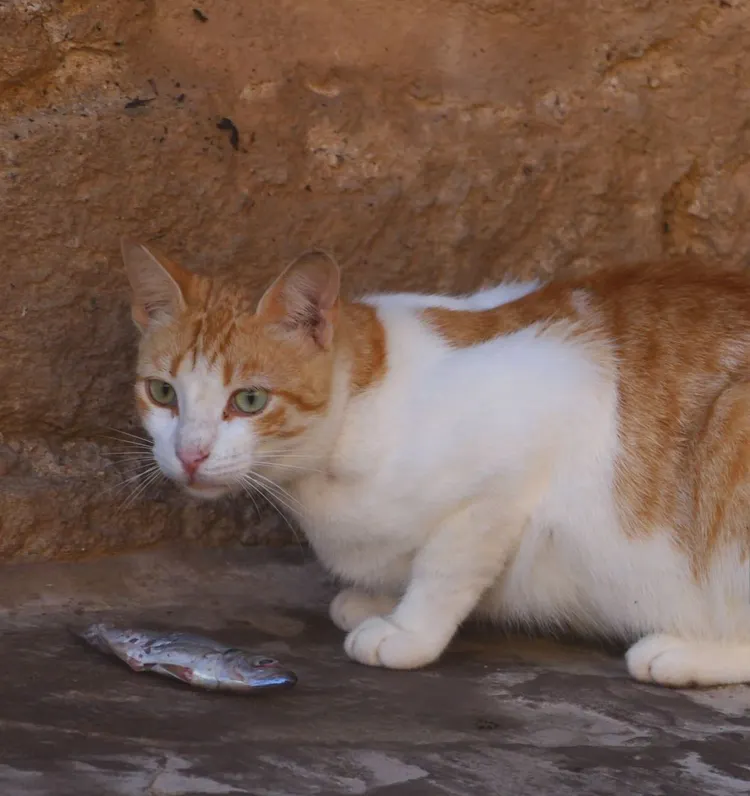Ever opened a can of sardines only to find your cat staring at you with those pleading eyes? If you’ve ever wondered whether you should give in to your feline’s begging for a salty treat, you’re not alone. Sardines might seem like a healthy snack, but are they truly beneficial for cats? This post dives deep into the safety, nutritional benefits, and potential risks of feeding sardines to your cat, as well as eco-friendly ways to incorporate them into their diet.
Are Sardines Safe for Cats?
Yes, sardines can be a safe and healthy treat for cats when served in moderation. These small, oily fish are packed with nutrients that can benefit your cat’s overall health. Sardines are rich in omega-3 fatty acids, high-quality protein, and essential vitamins and minerals.
Nutritional Benefits
- Omega-3 Fatty Acids: Sardines are an excellent source of omega-3 fatty acids, which are beneficial for skin and coat health. Omega-3s can also help reduce inflammation, support joint health, and boost the immune system.
- High-Quality Protein: As obligate carnivores, cats rely heavily on protein in their diet. Sardines provide a rich source of animal protein, which helps with muscle maintenance and overall energy.
- Essential Nutrients: Sardines are rich in vitamin B12, which supports the nervous system and healthy brain function, and selenium, which helps protect cells from damage and strengthens the immune system.
Risks and Considerations
While sardines offer many benefits, there are some risks to consider, especially if you’re feeding your cat canned sardines.
- Mercury Content: Like many fish, sardines can contain small amounts of mercury. Fortunately, sardines are relatively low in mercury compared to larger fish like tuna. However, it’s still important to serve sardines in moderation to avoid any potential long-term risks.
- Sodium Levels: Many canned sardines are packed in oil, brine, or sauces that contain high levels of sodium. Too much sodium is not good for cats and can lead to dehydration, kidney issues, or other health problems. Always check the label and opt for water-packed, low-sodium sardines.
When feeding sardines to your cat, choosing the right type and controlling portions are crucial to ensuring they stay healthy and avoid any negative effects.
Health Benefits of Sardines for Cats
Sardines can provide a wide range of health benefits for your cat, making them a nutritious supplement to their regular diet.
1. Promotes Healthy Skin and Coat
Thanks to their omega-3 fatty acid content, sardines help keep your cat’s skin healthy and their coat shiny. Omega-3s also support the natural oils in a cat’s skin, helping to reduce itchiness and flakiness, which can be especially beneficial for cats with dry skin.
2. Supports Joint Health
The anti-inflammatory properties of omega-3s can benefit cats with arthritis or other joint problems. Regular intake of these fatty acids may help reduce inflammation and improve joint mobility, particularly in older cats.
3. Boosts Immune System
Sardines are packed with nutrients like vitamin D, selenium, and B vitamins, all of which support a healthy immune system. Cats that receive these essential vitamins and minerals can better ward off infections and maintain overall health.
4. Aids in Brain Development
Vitamin B12, found abundantly in sardines, plays a critical role in maintaining neurological health. It’s particularly important for kittens or young cats, aiding in brain development and supporting cognitive functions.

How to Serve Sardines to Cats
To maximize the benefits while minimizing the risks, it’s important to serve sardines in the right way.
1. Choose the Right Type of Sardines
Always choose plain sardines packed in water with no added salt, oils, or preservatives. Avoid sardines packed in brine, heavy oils, or flavored sauces, as these contain excessive sodium or other additives that are not safe for cats.
2. Portion Size
Sardines should only be given as an occasional treat, not as a primary food source. Due to their high fat content, it’s best to limit sardines to small amounts. For an average adult cat, half to one sardine is sufficient for a treat. Too many sardines can contribute to weight gain and gastrointestinal upset.
3. Fresh or Canned Sardines?
While fresh sardines are ideal, canned sardines can also be a convenient option. Just ensure they are plain and low in sodium. If you choose fresh sardines, they should be thoroughly cooked (not raw) to eliminate any potential parasites.
4. Introducing Sardines
Introduce sardines slowly to your cat’s diet to make sure they tolerate it well. Start with small portions and monitor for any signs of gastrointestinal distress, such as vomiting or diarrhea. If your cat seems to enjoy sardines without any issues, they can be incorporated as an occasional treat.
Eco-Friendly Considerations for Serving Sardines
As an eco-conscious pet owner, it’s important to consider the environmental impact of the sardines you buy. Overfishing and unsustainable practices can have devastating effects on marine ecosystems. Fortunately, there are ways to ensure that your sardines are not only healthy for your cat but also kind to the planet.
1. Choose Sustainably-Sourced Sardines
Look for sardines that are certified by organizations like the Marine Stewardship Council (MSC) or Friend of the Sea. These certifications ensure that the fish are caught using sustainable fishing methods, minimizing the impact on the environment and maintaining healthy fish populations.
- Marine Stewardship Council (MSC): An international organization that sets standards for sustainable fishing. MSC-certified sardines are caught in a way that ensures the long-term sustainability of the species.
- Friend of the Sea: Another certification that guarantees the fish were caught with minimal environmental impact, with a focus on protecting marine biodiversity.
2. Opt for Fresh Sardines
When possible, choose fresh sardines over canned ones. Fresh sardines require less packaging and energy during production, which reduces their environmental footprint. If fresh sardines aren’t available, look for sardines sold in recyclable cans and be sure to recycle them appropriately.
3. Minimize Waste
To reduce environmental impact, only buy what you need and store the rest properly to avoid waste. If you open a can of sardines, refrigerate any unused portions to prevent spoilage, and always serve your cat small portions to avoid overeating or food waste.

Alternatives to Sardines for Cats
If sardines aren’t available or if your cat has particular dietary needs, there are other sustainable fish options that offer similar nutritional benefits.
1. Mackerel
Like sardines, mackerel is rich in omega-3 fatty acids and can be served occasionally as a treat for your cat. Choose wild-caught, sustainably sourced mackerel to ensure minimal environmental impact.
2. Anchovies
Anchovies are another small, oily fish that can be a good alternative to sardines. They’re rich in omega-3s and protein but have lower mercury levels than larger fish like tuna.
3. Tuna (in moderation)
Tuna can be an option, but it should be given sparingly due to its higher mercury content. Opt for wild-caught, sustainably sourced tuna packed in water with no added salt or oils.
Conclusion
Sardines can be a healthy, nutritious treat for cats when served in moderation. Packed with omega-3 fatty acids, protein, and essential vitamins, sardines support your cat’s skin, coat, joint health, and immune system. However, it’s important to choose the right type of sardines—opt for low-sodium, water-packed, sustainably-sourced options to ensure your cat’s treat is both safe and eco-friendly.
While sardines can be a great addition to your cat’s diet, always keep sustainability in mind by choosing eco-conscious products and minimizing waste. With these simple steps, you can feel good about giving your cat a delicious treat while also doing your part to protect the planet.



